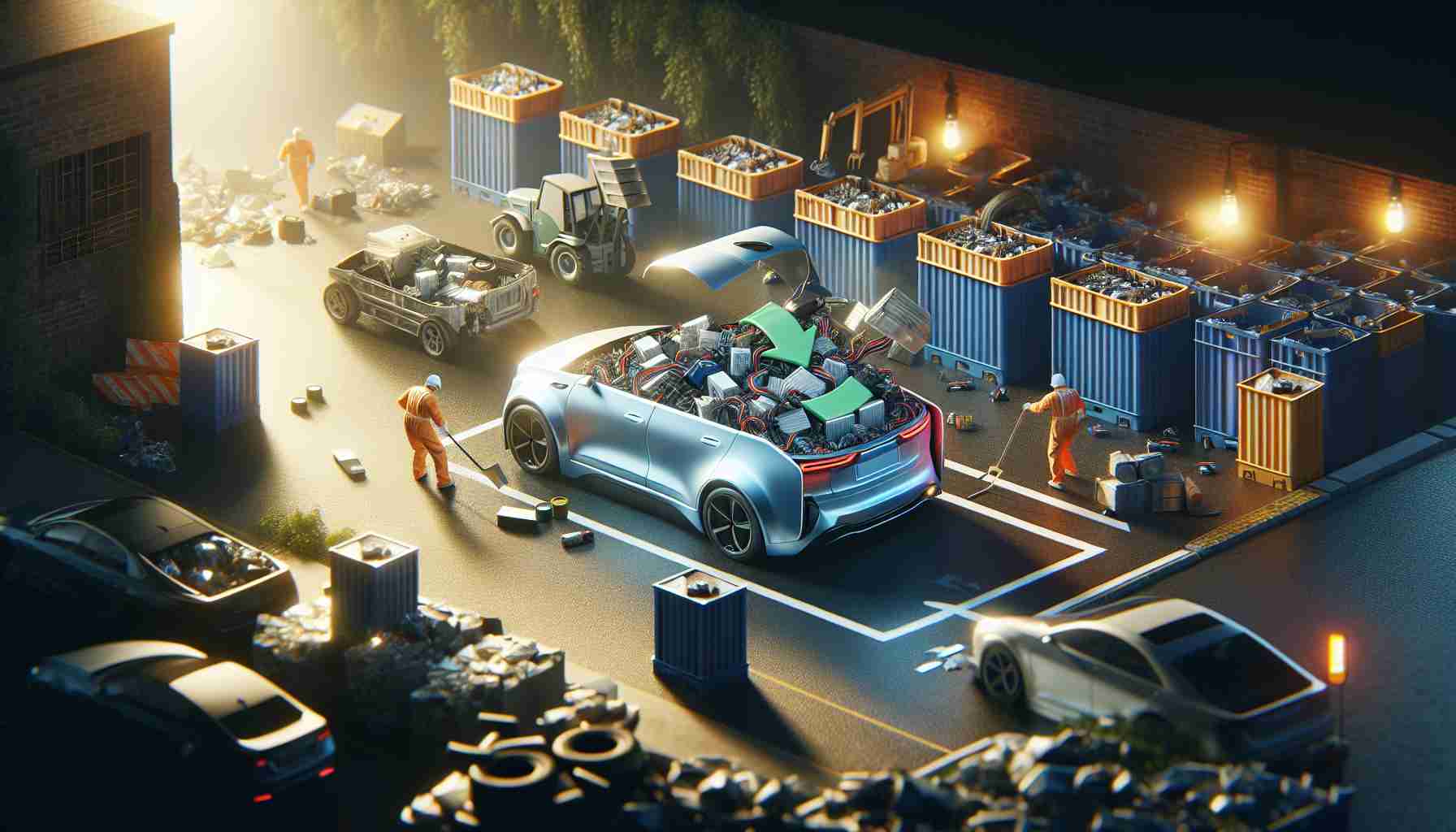- Used electric vehicle (EV) prices have dropped 60% since 2022, leading to innovative solutions for old batteries.
- Old EV batteries retain about 80% of their energy capacity, making them viable for repurposing.
- Companies like Connected Energy are transforming used batteries into energy storage systems for homes and charging stations.
- Repurposing batteries reduces carbon emissions associated with battery production and enhances the market for used EVs.
- The global energy storage market is projected to reach $125 billion by 2030, highlighting the economic viability of revamped battery solutions.
- Utilizing second-life batteries can lead to lower energy costs and increase home energy independence.
Electric vehicles (EVs) are reshaping our world, but a startling 60% plunge in the prices of used EVs since 2022 raises eyebrows. Fortunately, there’s a silver lining emerging from this decline: repurposing old EV batteries. Imagine giving those batteries a stunning second life instead of sending them to the landfill!
When an EV reaches its end, its battery still holds an impressive 80% of its energy capacity. Innovators like Connected Energy are leading the charge, envisioning these batteries as integral to a sustainable energy future. Picture energy storage systems powering homes or bustling charging stations, all fueled by refurbished batteries. This solution not only generates revenue in the thousands but also dramatically cuts down on carbon emissions linked to new battery production.
As second-life batteries take center stage, they stabilize the market and breathe new life into used EVs, making them more appealing to buyers. By enhancing the value of used EVs, these repurposed batteries help tackle the financial woes of leasing companies too.
With the global energy storage market set to soar to $125 billion by 2030, adopting these creative battery solutions promises not just benefits for the environment but also potential savings for consumers. Imagine slashing energy costs while boosting your home’s energy independence!
In our journey towards electric mobility, embracing the second life of EV batteries could be the game-changer we all needed. So, when considering your next EV, think beyond the sticker price and unlock your vehicle’s hidden potential!
The Hidden Goldmine: How Repurposing EV Batteries is Transforming the Market
New Insights on Second-Life EV Batteries
The landscape of electric vehicles (EVs) is dramatically changing, particularly in light of the recent 60% decline in used EV prices since 2022. While this drop raises questions for potential buyers and leasing companies, an exciting opportunity has emerged through the concept of repurposing used EV batteries. This innovative approach not only helps reduce waste but also contributes to a more sustainable energy ecosystem.
1. Market Forecasts: The global energy storage market is projected to reach an astounding $125 billion by 2030. This growth is fueled by the increasing adoption of renewable energy sources and the need for reliable storage solutions.
2. Innovative Uses: Companies like Connected Energy are at the forefront of transforming used EV batteries into viable energy storage systems. These refurbished batteries can provide energy for homes, solar panel energy storage, and even support electric vehicle charging stations, demonstrating their versatility.
3. Sustainability Efforts: Repurposing EV batteries significantly cuts down on carbon emissions associated with new battery production. This not only aids in environmental conservation but also aligns with global sustainability goals.
4. Market Insights: The resale of used EVs has become more appealing due to the integration of second-life battery systems. This revitalization offers both value to consumers and financial relief to leasing companies, creating a more stable market environment.
5. Limitations of New Batteries: New battery productions are fraught with complications, such as raw material sourcing and ethical mining practices. In contrast, utilizing second-life batteries mitigates many of these issues by extending the lifecycle of existing batteries.
Key Questions Answered
1. What are the primary benefits of repurposing old EV batteries?
Repurposing old EV batteries can significantly reduce electronic waste and carbon emissions. It allows for sustainable energy storage solutions, contributing to energy independence for consumers and supporting the broader transition to renewable energy sources.
2. How do repurposed EV batteries impact the market for used EVs?
Repurposed batteries enhance the appeal of used EVs by adding value through their potential as energy storage solutions. This can stabilize the used EV market and attract more buyers who are conscious of both the environmental impact and cost savings.
3. What challenges do companies face in implementing second-life battery solutions?
Companies must navigate regulatory hurdles, consumer education, and market acceptance for second-life battery solutions. Additionally, ensuring the safety and reliability of repurposed batteries is vital for gaining consumer trust.
Suggested Reading
Learn more about how the future of electric mobility is unfolding at energy.gov.



















